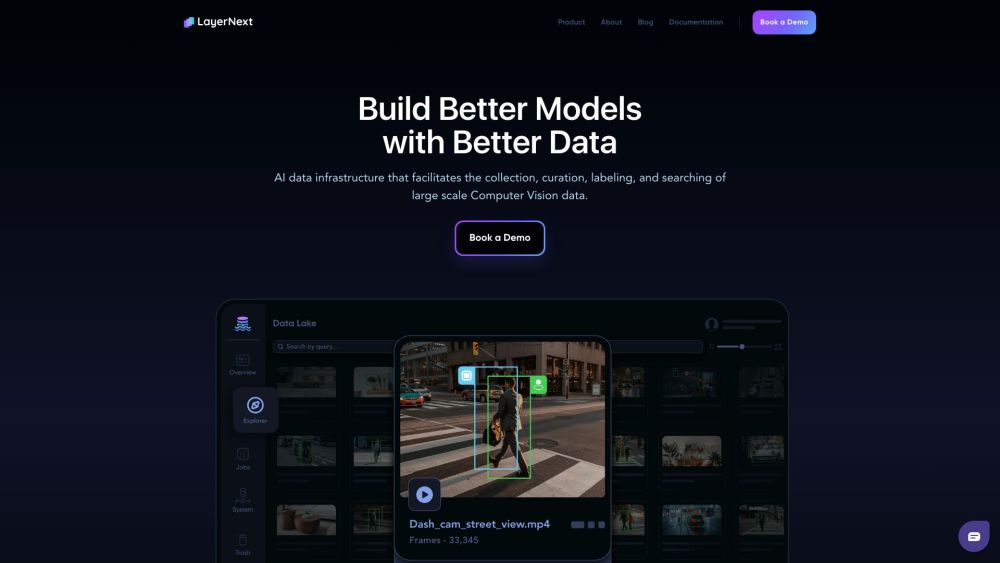
What is LayerNext?
LayerNext is an advanced AI-powered platform designed to simplify and enhance the management of computer vision data throughout its lifecycle. From gathering and organizing visual data to labeling and searching through vast datasets, LayerNext offers a comprehensive solution tailored for teams working with large-scale image and video processing. Built with a unified infrastructure, it enables seamless handling of metadata, annotations, model iterations, and all visual assets in one centralized environment.
How to use LayerNext?
Getting started with LayerNext is straightforward. Begin by creating an account and logging into the platform. Once inside, the DataLake feature allows you to access and visualize all your AI-related data in a single interface. Use the Annotation Studio to efficiently label images and videos at scale, and manage your training datasets using the Dataset Manager, which supports version control. LayerNext also offers robust integration capabilities via SDKs and APIs, allowing you to connect with existing computer vision workflows. With built-in automation tools, users can streamline repetitive tasks and significantly boost productivity.